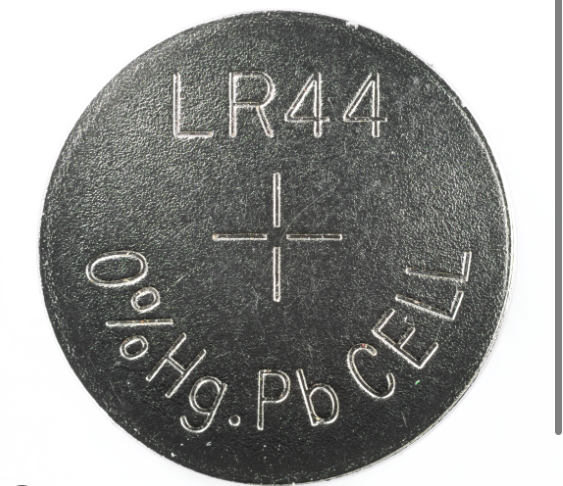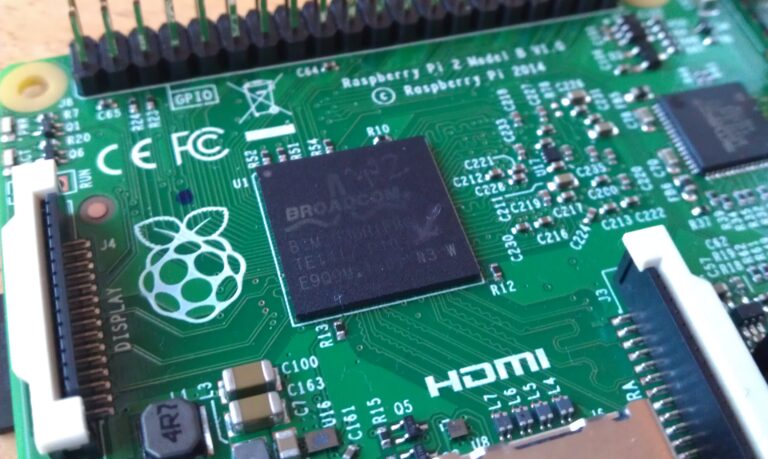Table of Contents
Batteries are the unsung heroes of our modern lives, providing the energy needed to keep our gadgets and devices running smoothly. One such powerhouse in the miniature battery world is the LR44 battery, a compact yet mighty source of power. In this comprehensive guide, we’ll delve into the intricacies of LR44 batteries, exploring their composition, applications, and the best practices for usage.
I. Introduction
In a world dominated by electronic devices, the need for reliable and long-lasting batteries has never been greater. LR44 battery, although small in size, play a significant role in powering various gadgets, from small toys to sophisticated medical instruments.
II. What is an LR44 Battery?
LR44 batteries, also known as button cell batteries, are coin-shaped batteries commonly used in small electronic devices. Composed of various materials, these batteries stand out for their compact size and stable power output.
III. Sizes and Shapes
LR44 batteries come in different sizes and shapes, catering to the diverse needs of electronic devices. Understanding the variations in size is crucial for selecting the right battery for your gadgets.
IV. Chemistry Behind LR44
To comprehend the power within an LR44 battery, it’s essential to unravel the chemistry behind it. This section will break down the components and their roles in delivering a consistent power supply.
The LR44 battery operates based on alkaline chemistry. Alkaline batteries, in general, use zinc and manganese dioxide as their primary components.
- Cathode (Positive Terminal):
- The cathode of an LR44 battery is composed of manganese dioxide (MnO2). Manganese dioxide acts as the electron acceptor during the electrochemical reactions that occur in the battery.
- Anode (Negative Terminal):
- The anode is typically made of zinc (Zn). Zinc serves as the source of electrons during the electrochemical reactions.
- Electrolyte:
- The electrolyte in alkaline batteries is usually a potassium hydroxide (KOH) solution. The electrolyte allows the flow of ions between the cathode and the anode.
The overall chemical reaction involves the oxidation of zinc at the anode and the reduction of manganese dioxide at the cathode. The flow of electrons from the anode to the cathode through an external circuit is what generates electrical current, allowing the battery to power electronic devices.
Key Characteristics of LR44 Batteries:
- Voltage: LR44 batteries typically have a voltage of 1.5 volts.
- Size and Shape: LR44 batteries are small, button-shaped cells.
- Common Applications: Watches, calculators, small electronic gadgets, medical devices, and other low-power devices.
It’s important to note that while LR44 batteries are widely used, they are not rechargeable. Once their chemical reactions are exhausted, the battery is considered spent and should be disposed of properly according to local regulations.
V. Applications
LR44 batteries, also known by other designations such as AG13, A76, or button cell batteries, find applications in various small electronic devices that require a compact and reliable power source. Here are common applications of LR44 batteries:
- Watches:
- LR44 batteries are commonly used to power the quartz movements in analog and digital wristwatches.
- Calculators:
- Many pocket calculators and other small electronic arithmetic devices use LR44 batteries for their power source.
- Cameras:
- Some small cameras, especially those in which size and weight are critical factors, use LR44 batteries to provide power.
- Toys:
- LR44 batteries are often used in small electronic toys, such as miniaturized robots, remote-controlled cars, and other battery-operated playthings.
- Key Fobs:
- Keyless entry systems and remote key fobs for cars may utilize LR44 batteries to power the electronic components.
- Medical Devices:
- LR44 batteries can be found in certain medical devices, including small electronic thermometers, glucometers, and hearing aids.
- Flashlights:
- Some compact LED flashlights and keychain lights use LR44 batteries due to their small size and sufficient power output for these applications.
- Electronic Games:
- Handheld electronic games and devices, especially those designed for portability, may use LR44 batteries.
- Remote Controls:
- Some small remote controls, such as those for garage door openers or other household devices, use LR44 batteries.
- Laser Pointers:
- Compact laser pointers often use LR44 batteries for their power supply.
- Electronic Pet Collars:
- Certain electronic pet collars that use small electronic components for tracking or training purposes may be powered by LR44 batteries.
- Small Gadgets and Gizmos:
- LR44 batteries are suitable for various small electronic gadgets and gizmos where compact size and adequate power are essential.
These batteries are chosen for applications where a small, lightweight power source is needed, and the relatively low power demands of the device can be met by the voltage and capacity provided by LR44 cells. Keep in mind that when using LR44 batteries, it’s important to check and follow the manufacturer’s recommendations for the specific device to ensure optimal performance.
VI. Durability and Longevity
The durability and longevity of LR44 batteries depend on various factors, including the quality of the battery, the specific application, and the power requirements of the device. Here are some considerations regarding the durability and longevity of LR44 batteries:
- Capacity:
- LR44 batteries typically have a relatively small capacity due to their compact size. The capacity is measured in milliampere-hours (mAh). Higher capacity LR44 batteries may last longer than lower capacity ones.
- Usage Patterns:
- The longevity of LR44 batteries is influenced by how often and for how long the device using them is in use. Devices with frequent or prolonged usage will drain the battery faster.
- Device Power Requirements:
- The power demands of the device using LR44 batteries play a crucial role. Devices that require higher power levels may deplete LR44 batteries more quickly.
- Self-Discharge Rate:
- LR44 batteries, like many alkaline batteries, have a self-discharge rate. This means they gradually lose their charge even when not in use. However, the self-discharge rate is generally low in alkaline batteries.
- Quality of the Battery:
- The quality of LR44 batteries can vary between brands. Higher-quality batteries may have better construction and materials, leading to improved durability and longevity.
- Temperature:
- Extreme temperatures, both hot and cold, can affect battery performance. Storing or using LR44 batteries in conditions outside their recommended temperature range may reduce their lifespan.
- Discharge Characteristics:
- Some devices may have specific discharge characteristics that impact battery life. For example, devices that draw a higher current may cause LR44 batteries to deplete more quickly.
- Voltage Stability:
- LR44 batteries maintain a relatively stable voltage until near the end of their life. Some devices may stop functioning effectively before the battery is completely depleted if they are sensitive to variations in voltage.
- Alkaline vs. Silver Oxide:
- LR44 batteries are available in both alkaline and silver oxide chemistries. Silver oxide LR44 batteries generally have a higher capacity and longer lifespan compared to alkaline LR44 batteries.
In summary, the durability and longevity of LR44 batteries can vary based on multiple factors. It’s advisable to choose high-quality batteries from reputable manufacturers, follow the device manufacturer’s recommendations, and store batteries in a cool, dry place to maximize their performance and lifespan. Additionally, when LR44 batteries no longer power a device effectively, it’s essential to recycle them properly in accordance with environmental guidelines.
VII. Purchasing Guide
Navigating the market for LR44 batteries can be overwhelming. When purchasing LR44 batteries, also known as AG13 or A76, it’s important to consider various factors to ensure you choose the right ones for your needs. Here’s a purchasing guide for LR44 batteries:

- Check Device Compatibility:
- Verify that LR44 batteries are compatible with your device. While LR44 batteries are common in many small electronic devices, it’s essential to ensure they meet the specifications of your particular gadget.
- Chemistry Type:
- LR44 batteries are available in both alkaline and silver oxide chemistries. Silver oxide LR44 batteries generally have a higher capacity and longer lifespan compared to alkaline LR44 batteries. Consider the specific needs of your device and choose the appropriate chemistry.
- Brand Reputation:
- Choose LR44 batteries from reputable brands. Established brands often have better quality control, leading to more reliable performance and longer battery life. Check on the Amazon Store to find a best one for you.
- Expiration Date:
- Check the expiration date on the battery packaging. Avoid purchasing batteries that are close to or past their expiration date, as old batteries may have reduced performance.
- Packaging Size:
- LR44 batteries are commonly sold in blister packs or bulk packaging. Consider how many batteries you need and choose the packaging size that provides the best value for your requirements.
- Purchase from Authorized Retailers:
- Buy LR44 batteries from authorized retailers, either in physical stores or reputable online sellers. This helps ensure that you are getting genuine products and reduces the risk of purchasing counterfeit or low-quality batteries.
- Price Comparison:
- Compare prices from different retailers to get the best value for your money. Keep in mind that excessively low prices may be an indicator of substandard or counterfeit products.
- Read Customer Reviews:
- Read reviews from other customers who have purchased the same LR44 batteries. This can provide insights into the reliability and performance of the batteries.
- Consider Multi-Packs:
- If you use LR44 batteries frequently, purchasing multi-packs can be cost-effective. Just be sure to store unused batteries properly to maintain their freshness.
- Environmental Impact:
- Consider environmentally friendly options. Some brands offer batteries with reduced environmental impact or provide recycling programs for used batteries.
- Check for Certification:
- Look for LR44 batteries that meet industry standards and have certifications, such as the CE mark or compliance with RoHS (Restriction of Hazardous Substances) regulations.
- Voltage and Capacity:
- LR44 batteries typically have a voltage of 1.5 volts, but capacities may vary. If your device has specific power requirements, check the battery’s capacity (measured in mAh) to ensure it meets those needs.
By considering these factors, you can make an informed decision when purchasing LR44 batteries, ensuring that you get reliable and compatible power sources for your electronic devices.
VIII. Storage and Maintenance
Proper storage and maintenance are crucial for optimizing the performance of LR44 batteries.
Proper storage and maintenance of LR44 batteries can help maximize their performance and lifespan. Here are some guidelines to ensure the optimal storage and use of LR44 batteries:
Storage:
- Cool and Dry Environment:
- Store LR44 batteries in a cool, dry place. Avoid exposing them to extreme temperatures, as high temperatures can accelerate self-discharge and reduce overall performance.
- Avoid Direct Sunlight:
- Keep LR44 batteries away from direct sunlight and heat sources. Prolonged exposure to heat can lead to a decrease in battery life.
- Original Packaging:
- If possible, store LR44 batteries in their original packaging. The packaging provides some protection against environmental factors and prevents contact with metal objects that could cause short circuits.
- Avoid Mixing Batteries:
- Do not mix new and used batteries or batteries of different chemistries. Mixing batteries can lead to uneven discharge and affect overall performance.
- Keep Away from Metal Objects:
- Store LR44 batteries away from metal objects, such as coins or keys, to prevent short circuits that could lead to leakage.
- Check Expiration Date:
- Before using LR44 battery, check the expiration date. Discard any batteries that are close to or past their expiration date, as their performance may be compromised.
Maintenance:
- Check for Corrosion:
- Periodically inspect LR44 battery for signs of corrosion. If you notice any white or greenish deposits on the battery contacts, clean them using a cotton swab dipped in a mixture of water and mild acid (e.g., vinegar).
- Store Unused Batteries Properly:
- If you have spare LR44 batteries, store them properly to maintain their freshness. Consider using airtight containers or ziplock bags to prevent exposure to air and moisture.
- Chargeable Devices:
- If your device is rechargeable, use rechargeable batteries instead of LR44 battery. Rechargeable batteries are designed for multiple charge cycles and can be a more environmentally friendly option.
- Use Battery Cases:
- When carrying spare LR44 batteries, use dedicated battery cases to prevent contact with other metal objects and reduce the risk of short circuits.
- Dispose of Expired Batteries Properly:
- When LR44 batteries reach their expiration date or no longer provide sufficient power, dispose of them according to local regulations. Many communities have recycling programs for batteries.
- Avoid Over-Discharging:
- While LR44 battery is not rechargeable, avoiding over-discharging in devices can help maximize their effective use. If a device shows signs of weakening power, replace the LR44 batteries promptly.
By following these storage and maintenance guidelines, you can help ensure that LR44 batteries remain in good condition, providing reliable power when needed
IX. Eco-Friendly Disposal
Disposing of LR44 batteries, or any other household batteries, in an eco-friendly manner is essential to minimize environmental impact. Here are steps you can take for eco-friendly disposal of LR44 batteries:
- Recycling Centers:
- Check for local recycling centers or collection points that accept household batteries, including LR44 battery. Many communities have designated drop-off locations for battery recycling.
- Retailer Drop-Off Programs:
- Some retailers that sell batteries may have in-store collection programs for used batteries. Check with your local electronics or battery retailers to see if they offer battery recycling services.
- Municipal Collection Programs:
- Inquire with your local government or municipality about household hazardous waste collection programs. Some areas conduct periodic collection events for hazardous materials, including batteries.
- Battery Recycling Services:
- Utilize battery recycling services provided by specialized companies. These services often accept various types of batteries and ensure they are recycled in an environmentally responsible manner.
- Mail-In Recycling Programs:
- Some organizations and recycling companies offer mail-in programs for battery recycling. You can send used batteries to these programs for proper disposal.
- Check with Electronic Retailers:
- Electronic retailers, especially those selling devices that commonly use LR44 battery, may participate in recycling programs. Inquire about their disposal options for used batteries.
- Environmental Organizations:
- Certain environmental organizations may collaborate with recycling initiatives. Check if any local or national environmental groups have programs for battery recycling.
- Educate Yourself on Local Regulations:
- Be aware of local regulations regarding battery disposal. Some areas have specific guidelines for handling and disposing of household batteries, and it’s essential to comply with these regulations.
- Separate from Regular Waste:
- Do not dispose of LR44 battery in regular household waste. Batteries contain materials that can be harmful to the environment, and proper disposal is crucial to prevent pollution.
- Rechargeable Alternatives:
- Consider using rechargeable batteries instead of disposable ones. Rechargeable batteries can be reused multiple times, reducing the overall number of batteries that need to be disposed of.
Remember that batteries, including LR44 battery, can contain materials that are harmful to the environment if not disposed of properly. Recycling helps recover valuable metals and prevents potentially hazardous materials from contaminating soil and water.
Always follow the guidelines and recommendations provided by your local waste management authorities to ensure that LR44 batteries are disposed of in an eco-friendly and responsible manner.
X. Common Myths and Facts
Separating fact from fiction is essential for informed decision-making. Bust common myths surrounding LR44 battery and get to the truth of their capabilities.
Myth: LR44 battery is rechargeable.
Fact: LR44 batteries are typically not rechargeable. They are primary (non-rechargeable) batteries, and attempting to recharge them can lead to leakage, reduced performance, and safety hazards.
Myth: All LR44 battery has the same capacity and performance.
Fact: LR44 batteries can vary in capacity and performance, especially between brands. Some may be designed for higher energy output, longer lifespan, or better performance in certain conditions. It’s important to check the specifications and choose reputable brands for optimal results.
Myth: Storing LR44 battery in the refrigerator or freezer prolongs their life.
Fact: Storing batteries in the refrigerator or freezer is not recommended. While cool temperatures can slow down the self-discharge rate, the moisture in these environments can lead to condensation, which may damage the battery. It’s best to store LR44 batteries in a cool, dry place.
Myth: LR44 battery has the same voltage as larger batteries like AA or AAA.
Fact: LR44 battery typically have a voltage of 1.5 volts, which is the same as AA and AAA alkaline batteries. However, their capacity is much smaller due to their compact size.
Myth: The LR44 designation is universal, and all LR44 batteries are the same.
Fact: LR44 is a common designation, but it’s important to note that LR44 batteries can come in different chemistries, such as alkaline or silver oxide. Silver oxide LR44 batteries often have a higher capacity than alkaline LR44 batteries.
Myth: You can use LR44 battery interchangeably with other button cell batteries.
Fact: While LR44 batteries have common equivalents like AG13 or A76, it’s crucial to check the specific requirements of your device. Different button cell batteries may have varying voltages and chemistries, and using the wrong type can lead to device malfunctions.
Myth: Discarding LR44 batteries in regular household waste is safe.
Fact: LR44 batteries, like other household batteries, contain materials that can be harmful to the environment. It’s important to recycle them properly through designated recycling programs to prevent pollution and promote environmental sustainability.
Myth: LR44 battery is suitable for high-drain devices.
Fact: LR44 batteries are generally better suited for low to moderate-drain devices due to their compact size and limited capacity. For high-drain devices, considering batteries with higher capacity may be more appropriate.
Myth: LR44 battery cannot leak.
Fact: While LR44 batteries are designed to minimize the risk of leakage, any battery, under certain conditions, can potentially leak. It’s essential to replace LR44 batteries promptly and follow proper storage and usage guidelines.
Myth: Cleaning LR44 battery contacts with water is effective.
Fact: Water is not recommended for cleaning battery contacts. If corrosion is present, a mixture of water and mild acid (e.g., vinegar) applied with a cotton swab can be used to clean the contacts.
Always refer to the manufacturer’s guidelines and use LR44 battery according to recommended practices for optimal safety and performance.
XI. Troubleshooting
Even the most reliable batteries can face issues.
Troubleshooting LR44 battery-related issues involves identifying and addressing common problems that may arise when using these batteries in electronic devices. Here are some troubleshooting steps:
- Check Polarity:
- Ensure that LR44 battery is inserted with the correct polarity (+ and -). Incorrect insertion can lead to the device not working.
- Test Voltage:
- Use a multimeter to check the voltage of the LR44 battery. If the voltage is significantly lower than the specified 1.5 volts, the batteries may need replacement.
- Replace Expired Batteries:
- LR44 batteries have an expiration date. If the batteries are expired, replace them with fresh ones, as expired batteries may not provide sufficient power.
- Clean Battery Contacts:
- If the device shows signs of intermittent operation or failure, clean the battery contacts with a dry cloth or a cotton swab. For corroded contacts, use a mixture of water and mild acid (e.g., vinegar) on a cotton swab.
- Check for Battery Compartment Damage:
- Inspect the battery compartment for any signs of damage, such as bent contacts or loose connections. Damaged compartments may need repair or replacement.
- Use High-Quality Batteries:
- Low-quality or counterfeit LR44 batteries may lead to performance issues. Use batteries from reputable brands to ensure reliability.
- Check Device Compatibility:
- Confirm that LR44 batteries are suitable for the specific device. Using the wrong battery type or chemistry can result in poor performance or damage to the device.
- Avoid Over-Drain:
- Over-discharging LR44 batteries can lead to reduced lifespan. If the device shows signs of weakening power, replace the batteries promptly.
- Inspect for Battery Leakage:
- If the device is not working, check for signs of battery leakage. If leakage is present, clean the affected area and replace the batteries.
- Use Rechargeable Alternatives:
- If appropriate for your device, consider using rechargeable batteries as an alternative to LR44. Rechargeable batteries can be reused multiple times.
- Verify Device Functionality:
- Ensure that the device itself is functioning correctly. If the issue persists with multiple sets of LR44 batteries, the problem may lie with the device rather than the batteries.
- Contact Manufacturer Support:
- If troubleshooting steps do not resolve the issue, contact the manufacturer’s customer support for assistance. They can provide guidance on device-specific problems and warranty information.
Remember to follow safety guidelines during troubleshooting, and if the problem persists or if there is any uncertainty, consult the manufacturer’s instructions or seek professional assistance. Additionally, properly dispose of used batteries following environmental regulations.
XII. Innovations in Battery Technology
As technology advances, so does battery technology.
The future of LR44 battery, like other traditional button cell batteries, is likely to be influenced by ongoing developments in battery technology and changing consumer demands. Here are some potential trends and considerations for the future of LR44 battery:

- Advancements in Battery Technology:
- Ongoing research and development in battery technology may lead to improvements in energy density, lifespan, and environmental impact. Future iterations of LR44 battery could benefit from these advancements.
- Shift Toward Rechargeable Options:
- With an increasing focus on sustainability, there may be a growing demand for rechargeable alternatives to traditional button cell batteries. Manufacturers might explore developing rechargeable versions of LR44 battery to align with environmentally conscious trends.
- Integration of IoT Devices:
- As the Internet of Things (IoT) continues to expand, small, low-power devices that use LR44 battery may become more prevalent. The demand for reliable, long-lasting power sources for these devices could influence the evolution of button cell batteries.
- Environmental Considerations:
- Environmental concerns and regulations may impact the materials used in LR44 battery. Manufacturers may explore eco-friendly alternatives or implement recycling programs to address the environmental impact of disposable batteries.
- Increased Use in Medical Devices:
- The medical field often relies on small, reliable batteries for devices such as hearing aids, glucose monitors, and medical implants. LR44 batteries may continue to find applications in these medical devices, especially if advancements improve their performance.
- Integration into Wearable Technology:
- The growing popularity of wearable technology could lead to increased demand for compact and lightweight power sources like LR44 batteries. The integration of LR44 battery in wearable devices may depend on their ability to meet the power requirements of these technologies.
- Standardization and Compatibility:
- Standardization of battery sizes and compatibility across devices may remain important. However, changes in battery technology or the emergence of new form factors could impact the standardization of button cell batteries.
- Consumer Education:
- Increased consumer awareness of battery types, their environmental impact, and proper disposal methods could influence purchasing decisions. Manufacturers may focus on educating consumers about the benefits and considerations associated with LR44 battery.
- Alternative Energy Storage Solutions:
- Emerging energy storage solutions, such as flexible and thin-film batteries, could influence the landscape of small electronic devices. While these alternatives may not directly replace LR44 battery, they could compete in certain applications.
- Market Demand and Competition:
- The future of LR44 batteries will be shaped by market demand and competition among battery manufacturers. Consumer preferences, cost-effectiveness, and technological advancements will play key roles in determining the trajectory of LR44 Battery and similar button cell batteries.
It’s important to note that predicting the exact future of a specific battery type is challenging, as technological advancements and market dynamics can lead to unexpected shifts. However, the trends mentioned above provide insights into potential directions for the future of LR44 batteries
XIII. Conclusion
In conclusion, LR44 batteries stand as reliable and indispensable power sources for a wide range of devices. By understanding their composition, applications, and proper usage, consumers can make informed choices, ensuring their gadgets remain powered up when needed. If You are more interested in Tech Trends Do check our other posts.
Frequently Asked Questions (FAQs)
- Are LR44 batteries rechargeable?
- LR44 batteries are typically not rechargeable. They are designed for single use.
- Can I use LR44 batteries interchangeably with other button cell batteries?
- While some batteries may have similar sizes, it’s recommended to use the specified battery type for your device to ensure optimal performance.
- What is the average lifespan of an LR44 battery?
- The lifespan can vary based on usage and storage conditions, but on average, an lr44 battery can last for one to three years.
- Are there any safety precautions when handling LR44 batteries?
- It’s essential to keep lr44 battery away from young children and avoid puncturing or disposing of them improperly. Follow the manufacturer’s guidelines for safe handling.
- Can LR44 batteries be used in high-drain devices like digital cameras?
- LR44 batteries are not typically suitable for high-drain devices. It’s advisable to use batteries specifically designed for high-power requirements in such devices.








One Comment